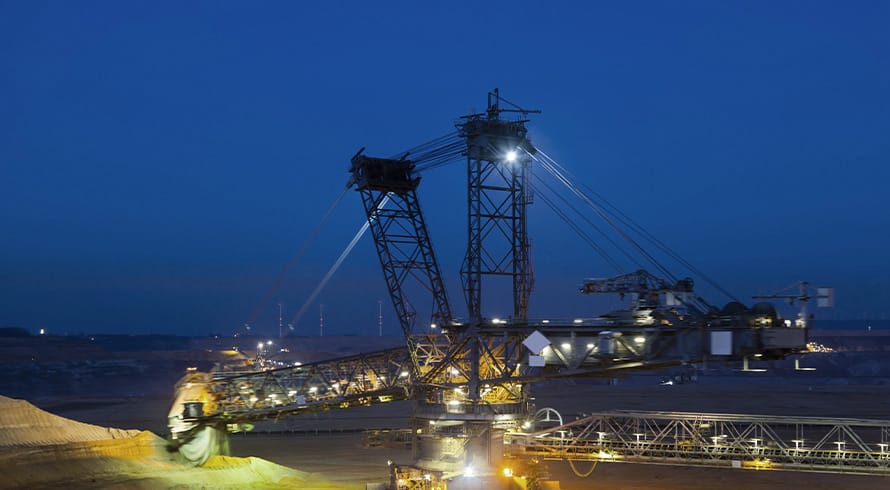The future of underground coal gasification – take two!
The eventual withdrawal of the MPRDA Amendment Bill is generally welcomed, as it implies that certain proposed amendments (ie declaration of strategic minerals, the proposed new application system for rights etc) which would have created further uncertainty in the mining sector in South Africa is abandoned. There is, however, certain provisions within the MPRDA Amendment Bill that was intended to provide clarity to the position of UCG (ie whether the underground gasification is a mining technique or petroleum production process).
In broad terms UCG is a technology where coal is ignited underground with a controlled flow of oxidant gas, (such as air, enriched air etc.) and water. It converts the coal into synthetic gas, of which the gas is directly used as fuel, co-fired with other fuels such as natural gas, or coal and can power gas turbines for electricity generation.
To clarify whether UCG constitutes a mining operation (Charter 4 of the MPRDA) or a production operation (Chapter 6 of the MPRDA) the MPRDA Amendment Bill introduced the word “gasification” after the word “underground” as part of the definition of “mine”. It further introduced a definition for gasification that reads “a process applied to non-mined coal seams, using injection and production wells drilled from the surface, which enables the coal to be converted in situ into gas.” This proposed amendment intended to make it clear that the extraction of syngas utilising UCG technology constitutes a mining process as opposed to a production process (Oil & Gas).
There has been stagnation in the legislative process and it is hoped that regulatory certainty would be provided to the place of UCG technology in extracting syngas from qualifying coal seams. From an extractive industry perspective UCG is recognized as a mining technique as a solid hydrocarbon (ie coal in situ) is converted to synthetic gas.
It is now hoped that regulatory certainty (ie from an upstream perspective) will be done as part of the proposals by government to split the MPRDA in to two pieces of legislation that separately will regulate the upstream mining and petroleum sectors in South Africa. As part of that process it is also imperative that there is a clearly legislative regime that deals with conflicting rights applications for minerals and petroleum resources over the same area. Our first-hand experience suggests that there is a need to ensure that conflicts of rights are adequately dealt with in any future legislation – not to leave a vacuum, as currently the case with conflicting mineral and petroleum rights.
The MPRDA as it stands allows for an applicant to apply for a mineral right (ie coal) and a production right (ie methane gas) over the same land. This has resulted in numerous disputes with holders of mineral rights and holders of petroleum rights. Then there is the proposed water use licence regulations for UCG which has not progress for the past three years – we understand a draft has been prepared by the Department of Water and Sanitation with input from a leading UCG expert in Canada – but to date the industry is still awaiting the official publication of the regulations by the Department.
In addition, from an a downstream perspective there is recognition in the Draft Integrated Resource Plan, 2018 (Draft IRP2018) that UCG must play a role in South Africa’s energy generation capacity – but it’s not clear whether the Draft IRP2018 contemplates whether syngas that can be commercially extracted using UCG technology before 2030 will be considered as part of the proposed gas allocation in the Draft IRP2018. The uncertainty is created by the fact UCG is only referred to under the discussion relating to detailed studies of certain technologies to be considered post-2030;
and that the post-2030 path not be confirmed in the new IRP once gazetted.
UCG appears to have so much potential for South Africa from an energy security and job creation perspective – and could be one of those sectors which could be a catalyst for South Africa to be a front runner in clear coal technology revolution. As country built on coal, we have the expertise and skill to invest in a clean coal revolution. A number of academic institutions in South Africa has already taken on the task of investing the necessary skills for the industry, but government support remains lacking. If South Africa does not invest in clean coal technologies, countries such as Botswana, which is equally endowed with large coal resources, appears to be prepared to take up the opportunity. The Botswana’s government has a great drive to encourage investment in the coal mining sector with various incentives and benefits for qualifying investors.
From both the upstream (ie mining) to the downstream (ie electricity generation), perspective it is imperative that the South Africa government support the realisation of UCG has a technology that could be a catalyst for future economic growth. South Africa has an abundance of coal resources and the potential is there to ensure that clean coal technologies are utilised to provide for sustainable future exploitation of coal in a manner that reduces the environmental impact thereof and builds industries for the fourth industrial revolution.
The information and material published on this website is provided for general purposes only and does not constitute legal advice. We make every effort to ensure that the content is updated regularly and to offer the most current and accurate information. Please consult one of our lawyers on any specific legal problem or matter. We accept no responsibility for any loss or damage, whether direct or consequential, which may arise from reliance on the information contained in these pages. Please refer to our full terms and conditions. Copyright © 2026 Cliffe Dekker Hofmeyr. All rights reserved. For permission to reproduce an article or publication, please contact us cliffedekkerhofmeyr@cdhlegal.com.
Subscribe
We support our clients’ strategic and operational needs by offering innovative, integrated and high quality thought leadership. To stay up to date on the latest legal developments that may potentially impact your business, subscribe to our alerts, seminar and webinar invitations.
Subscribe




